Read Reviews
The Best Lawn Scarifiers
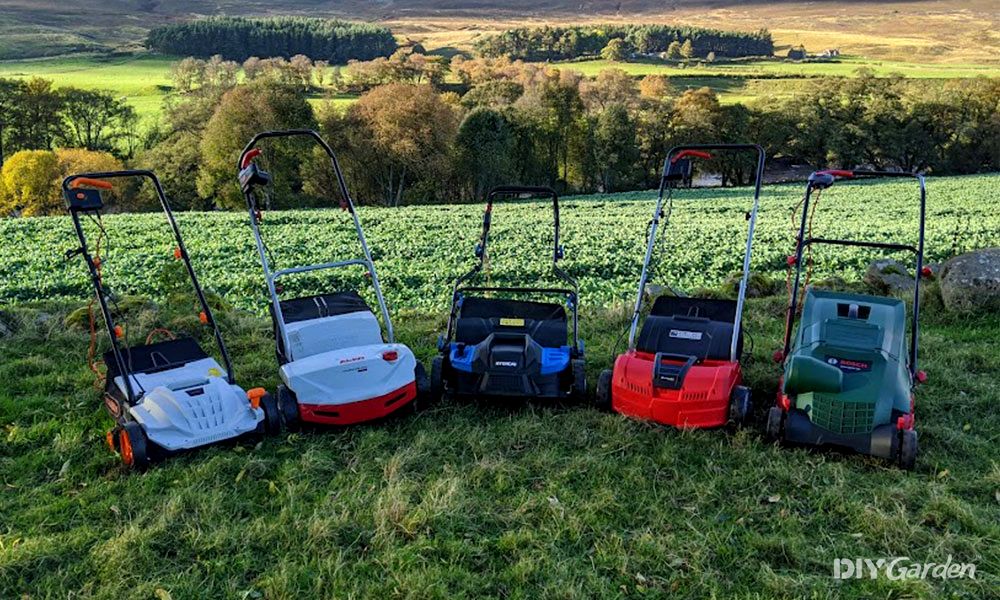
Is your grass being overrun with moss and thatch? Is it looking dense and unhealthy? As a landscape gardener with over 22 years experience in lawn care, this is something I see very often. Thankfully, the right lawn scarifier can fix this for you, by removing unwanted growth and giving it much needed aeration. After weeks of testing, my top recommendation is the Hyundai 2-in-1 Lawn Scarifier and Aerator. Read on to find out why I think it’s so good, and how I went about my testing.
-
Best scarifier and aerator - Hyundai 2-in-1 Lawn Scarifier and Aerator
-
Best budget scarifier - VonHaus 2 in 1 Lawn Scarifier & Raker (1500W)
-
Best quality scarifier - Bosch UniversalVerticut 1100
-
Best value scarifier aerator - Einhell GC-SA 1231/1 Electric Scarifier & Aerator
-
Best for large gardens - AL-KO Comfort 38E 2-in-1 Electric Lawn Rake & Scarifier
Lawn Scarifier Reviews
1. Hyundai 2-in-1 Lawn Scarifier and Aerator[ SAVE 17% ]
Best scarifier and aerator
- 5 height settings make this machine versatile on various types of lawns
- 36cm cutting width makes short work of larger lawns
- Effectively scarifies and aerates (most other 2-in-1 models aren’t great at aerating)
- Its weight (11.4kg) gives it sturdiness, but doesn’t make it too heavy to lift
- 2 handle positions make this machine comfortable to use for people of varying heights (the handles are foldable too for easy storage)
- No tools are required to swap the rollers over
- Comes with a free wall bracket for convenient storage
- Assembly is fiddly and time-consuming - set aside at least 30 minutes
- The collection bag feels flimsy and doesn’t fill to full capacity
- Thatch and grass sometimes falls out of the collection bag while the machine is working, meaning that you’ll still need to rake your lawn once you’re done
- Slightly louder than other scarifiers, which could potentially annoy nearby neighbours
- Working Width
- 36cm
- No. of Heights
- 5
- Weight
- 11.5kg
- Capacity
- 45 litres
- Power
- 1500W
- Power Source
- Corded Electric
- Cable Length
- 10m
- Assembly
- 4
- Design
- 5
- Performance
- 5
- Ease of Use
- 5
- Noise
- 4
- Safety
- 5
- Value for Money
- 4.5
I’m a big fan of Hyundai’s garden products – I recently tried-and-tested their petrol lawn mower, and it’s the best I’ve ever used. So, I expected their 2-in-1 Lawn Scarifier and Aerator to also become a favourite. Keep reading to see how it fared when put to the test.
Let’s start with assembly. This Hyundai needed a little more work than the other models I tested. Assembly took about 30 minutes in total. This isn’t a huge amount of time, but keep in mind that I have a fair bit of experience assembling scarifiers. For someone who has never done this before, it’ll likely take a bit longer, especially considering that the instruction manual wasn’t particularly well put together.
However, once assembly was out of the way and I had a good look at the machine, I was instantly impressed. It comes with five height settings, from -12mm to +10mm (most other scarifiers have just three or four), and there’s a single lever to adjust the height. You can adjust the height of the handles too or fold them away to easily store the machine. Being a 2-in-1 model, this product comes with two interchangeable rollers; one for lawn scarification and one for lawn aeration.
With a sizeable 1500W motor, this machine is pretty powerful. It feels faster than the others I tested, and it’s also noticeably wider (36cm instead of the standard 32cm) meaning that it won’t take you quite as long to scarify your lawn. Not only will it save you time, but it does a great job too. Once you find the right height setting for your lawn, it’ll pull up moss and thatch without damaging healthy grass. It doesn’t leave the lawn quite as churned up as some of its competition, yet it effectively removes what it needs to.
The aerating roller works just as well. You may find that you don’t actually need to use it once you’ve scarified, but, if you do, you’ll be happy with the results.
Whether you’re scarifying or aerating, this machine is comfortable and easy to use. It’s not self-propelled, but the blades pull the machine along, making the job pretty effortless. It’s slightly heavier than the other scarifiers I tested (11.4kg), but this also gave the machine a sturdiness that the other scarifiers lacked. It’s worth noting that this machine is a little louder than the others, but not significantly so.
Now to touch upon the product’s main flaw – its grass collection bag. At 45 litres, it’s an adequate size, but that’s where the praise ends. It feels quite flimsy, it’s awkward to insert and remove, and it doesn’t fill fully. However, many people don’t actually use a collection bag when scarifying, preferring instead to get the job done first before raking or mowing the discarded thatch up. If this is what you plan on doing, then the issues with the collection bag won’t really matter.
Hyundai’s garden products are often priced higher than the competition, and this lawn scarifier is no exception. It may cost a little more, but, unlike many of the cheaper alternatives out there, this really is a machine that can effectively scarify and aerate – its 2-in-1 claim isn’t just a marketing ploy.
If your garden is on the small side, or if you’re only seeking a lawn scarifier (without the aerator) then it may not be worth splurging on Hyundai’s 2-in-1 Lawn Scarifier. However, I consider this the best lawn scarifier and aerator machine overall. It’s definitely a good option for medium or large gardens.
If you’re happy to do away with the collection bag, it’ll get the job done much faster than other similar scarifiers, giving you a thicker and healthier lawn the following season.
Did you find this review helpful?
2. VonHaus 2 in 1 Lawn Scarifier & Raker (1500W)
Best budget scarifier
- Fast assembly takes just 15 minutes
- A single lever adjusts the height of the machine, which saves time compared to models that have more than one lever
- A large 1500W motor prevents the machine from over-heating
- Lightweight at 8.5kg - it’s easy to lift and manoeuvre this machine
- The scarifying roller works very well
- May be a little narrow for larger lawns.
- The collection bag needs to be emptied very frequently (can fill up even within 5 mins).
- The handles are a little top-heavy and may make it a bit unbalanced when left to stand.
- Works more effectively as a scarifier than aerator - the metal rake tines are not overly strong.
- Working Width
- 32cm
- No. of Heights
- 4
- Weight
- 8.5kg
- Capacity
- 28 litres
- Power
- 1500W
- Power Source
- Corded Electric
- Cable Length
- 10m
- Assembly
- 4.5
- Design
- 5
- Performance
- 4
- Ease of Use
- 4.5
- Noise
- 5
- Safety
- 5
- Value for Money
- 4.5
VonHaus is loved by many for its eclectic range of home, kitchen, and garden tools. Thanks to their well-designed products, this brand has a loyal following, and it’s one that I’ve personally never had a bad experience with either. So, I had high hopes for their 2-in-1 Lawn Scarifier – a machine that promises to both scarify and aerate to give you a thicker and lusher lawn.
Assembling garden tools often feels like a chore, so I always appreciate products that require minimal assembly. This is what VonHaus promises with their 2-in-1 electric scarifier, and that’s a promise that they’ve managed to keep. Assembly took about 15 minutes overall – you simply need to attach the handles and the trigger, then swap over the aerating roller for the scarifier when necessary. The only tools you’ll need for assembling this machine are a Philip’s screwdriver and an Allen key (the Allen key comes included).
With its 32cm width, this machine is best-suited for small- to medium-sized gardens. That said, it could still handle a larger lawn too, it would just take longer than if you were to use a scarifier with a wider body (such as the AL-KO). The four scarifying depth settings make it even more versatile, and the fact that there’s just a single handle that you need to move to adjust the height definitely works in this product’s favour.
Turn the machine on and the scarifier will continue to impress. I started off at the highest setting before working my way lower, and I was very pleased with the results. It pulled out a fantastic amount of thatch but didn’t damage healthy grass too much – it wasn’t quite as brutal as the Einhell scarifier I tested.
However, where this machine falls short is with its aerating function. Unlike the other aerators I’ve used, this one doesn’t seem to actually aerate. Instead, the aerator roller does pretty much the same thing as the scarifier, except it’s much more severe. Remember all of that healthy grass I just mentioned that the scarifier left intact? Well, the aerator pretty much destroyed it all.
For this reason, I think it’s a great machine if you want a scarifier at a budget-friendly price; however, consider another option if the aerating function is also important to you. You’ll probably have to spend a bit more to get a machine that’s a better all-rounder.
Aerator aside, this machine is an easy one to use. It’s the most lightweight lawn scarifier on this page and manoeuvres well. The 28-litre collection bag is a little on the small side and I found myself having to empty the bag every couple of minutes (which wasted quite a bit of time). You can get around this by simply doing away with the bag and then either raking up or mowing over the thatch once you’re done.
Being a relatively quiet machine makes this scarifier suitable for urban settings – you won’t have to worry about your neighbours complaining about the noise it’s making, and ear defenders are definitely not needed. I also appreciated the machine’s safety features, from its bright orange lead that remains visible even in dark grass to the button that needs to be pressed before the machine can be turned on.
The main takeaway from testing this machine is that it’s the best lawn scarifier to buy on a budget. However, if you also need an effective aerator, you may need to look elsewhere.
For the price, it’s impressive because of the four height settings on offer as well as the power of its motor. It’s great for small and medium gardens but could also work across larger space. Plus, it’s not quite as brutal as some of the other scarifiers out there – it won’t leave quite as much devastation behind, but still cuts deep enough to remove all moss and thatch.
Did you find this review helpful?
3. Bosch UniversalVerticut 1100[ SAVE 43% ]
Best quality scarifier
- Quick and easy assembly takes just 10 minutes
- Made with higher quality parts than many other scarifiers
- Comes with a large (50 litre) hard plastic collection box, rather than a flimsy canvas collection bag like most other scarifiers
- Good for maintaining a lawn that has already been previously scarified
- A relatively quiet machine that won’t disturb your neighbours
- Individual tines can be replaced (rather than having to purchase a whole new roller), with spare parts being easy to find. This machine also comes with two spare tines
- Foldable handles and stackable parts make storage easy
- Unlike most of its competitors, this machine is designed solely for scarifying, rather than aerating too, which limits its use
- Priced higher than most of its competitors - it’s only worth the investment if you plan on using it regularly
- Two levers need to be adjusted in order to change the height
- Lawn rake function doesn’t work very well - you’d be faster using a hand rake or a lawn mower to tidy up your lawn
- Working Width
- 32cm
- No. of Heights
- 4
- Weight
- 10.5kg
- Capacity
- 50 litres
- Power
- 1100W
- Power Source
- Corded Electric
- Cable Length
- Not listed
- Assembly
- 5
- Design
- 5
- Performance
- 4
- Ease of Use
- 4
- Noise
- 5
- Safety
- 5
- Value for Money
- 3.5
Bosch is a brand that just about everyone is familiar with. I’ve personally used several Bosch products across my garden and home and have always been happy with how they have performed.
The Bosch UniversalVerticut 1100 is a popular choice for lawn scarification, despite being higher priced than its competitors, and I was excited to find out why…
Bosch products are usually pretty easy to assemble, and this electric lawn rake and scarifier was no exception. It took only 10 minutes to assemble – the quickest of any model. This immediately made me think ‘quality machine’.
From its colours to its design, this is very clearly a Bosch product. Yes, it’s made from plastic, but it still feels strong and durable. With a width of 32 cm and four different height settings (+10mm to -5mm), its design gives it great versatility.
The drum on this scarifier isn’t removable, unlike the other models I tested, so it can only be used as a scarifier (not an aerator as well). However, it performs this one function efficiently; it lifts moss and thatch from the lawn and is a great option for maintenance. It doesn’t cut quite as deeply as some of the other machines that I reviewed, such as the Einhell, but that’s not necessarily a bad thing. Not every lawn needs intense scarification! If maintenance is what you’re after, rather than a complete do-over, the Bosch will produce great results.
The Bosch scarifier also comes with a collection box, rather than a bag. Not only was this hard, plastic box much more robust than the fabric bags that most other scarifiers come with, but, at 50 litres, it was almost double the size too. The large collection box saves you from having to stop to empty quite as often.
The machine is also so easy to use, it’s lightweight at just under 10 kg making it simple to manage.
When it comes to safety features, the Bosch UniversalVerticut 1100 has everything you could need, from its easily-visible bright red power lead to the safety button that prevents the machine from accidentally turning on. It’s not a noisy machine either – in fact, it was probably the best lawn rake in terms of volume.
When it comes to price, there’s no getting away from the fact that this scarifier is priced significantly higher than its competition. In some ways, this is surprising, because it doesn’t offer quite as many features. However, in other ways, it’s to be expected – Bosch products usually do cost a little more, with the reasoning being that you’re paying for a machine that’s been built with quality in mind.
It’s also possible to purchase replacement tines, which gives the impression that this machine is built to last (on other machines, you may end up needing to replace the whole thing). However, be aware that those replacement tines aren’t cheap! Fortunately, Bosch provides two spare tines with this scarifier – treat them well and you hopefully won’t need to buy any extras.
When it comes down to it, you could either save money and go for a cheaper machine that both scarifies and aerates, or you could spend a little extra on this machine that specialises in scarifying. It’s easy to assemble, simple to use, and has been made to last. It may not be up to the task of scarifying a large lawn that has been neglected for years, but it’s exactly what you need if you’re looking for a way to maintain a small or medium-sized garden.
Unlike some of the other lawn scarifiers I tested, this option really does make scarifying feel like an effortless task. In my opinion, the high build quality was very notable.
Did you find this review helpful?
4. Einhell GC-SA 1231/1 Electric Scarifier & Aerator[ SAVE 15% ]
Best value scarifier aerator
- Minimal assembly takes just 15 minutes
- Handle height is adjustable and the handles are also foldable for easy storage
- Scarifying roller works exceptionally well - it’s one of the most effective of all the machines we tested
- At 9kg, this is a very lightweight machine that’s easy to manoeuvre and lift
- Designed with an Allen key holder on the handles - you’ll need an Allen key each time you swap the rollers over, so this ensures that you always have one nearby. Very clever!
- Collection bag is very small with a capacity of 28 litres. This means that you’ll be constantly stopping to empty the bag, unless you use the machine without the bag inserted
- Black power cable is hard to see in the grass, increasing your chances of accidentally running over it with the scarifier
- Power cable is only 4.5m long, so you may need to use an extension lead
- Only has three heights to choose from (others, such as the Hyundai, have five)
- Two levers need to be adjusted in order to change the height
- Doesn’t seem to aerate as deeply as it scarifies, although you may not need to aerate once you’ve used the scarifying roller
- Working Width
- 31cm
- No. of Heights
- 3
- Weight
- 9kg
- Capacity
- 28 litres
- Power
- 1200W
- Power Source
- Corded Electric
- Cable Length
- 4.5m
- Assembly
- 5
- Design
- 5
- Performance
- 5
- Ease of Use
- 4
- Noise
- 5
- Safety
- 3
- Value for Money
- 4
Nobody wants to spend a fortune on a separate scarifier and aerator, especially considering that it’ll only be used once, or twice at most, a year. That’s what makes the Einhell GC-SA 1231 Electric Scarifier and Aerator so instantly appealing – not only does it promise to scarify and aerate, it boasts a pretty reasonable price point to match.
However, let’s start at the beginning – the grand unboxing. It’s always a bonus when garden tools need minimal assembly, and this scarifier definitely fell into that category. Assembly only took about 15 minutes. All that needed to be done was assemble the handles, clip the cables into place, and swap the aerating roller that was already inserted with the scarifying roller.
If you’ve ever used an Einhell product before, you’ll be familiar with this product’s red and black branding. It immediately makes the scarifier look like a high-quality machine, and a closer look at its features confirms this. This dual-function machine boasts adjustable handle heights (the handles are also foldable for easy storage), three scarifying/aerating depth settings (plus an extra transport setting), and a working width of 31cm.
Once I turned the scarifier on, it continued to impress. Ok, to be fair, I was a little shocked at its brutality at first, but this is because I had the machine on its lowest setting. Once adjusted to the highest, the machine made light work of the small lawn that I was scarifying. It pulled out a large amount of thatch but didn’t leave the soil completely bare.
The scarifier did such a good job that I didn’t feel the need to aerate the entire lawn once I was done. However, I still gave the aerating roller a quick workout and it performed well. It didn’t aerate the ground as deeply as I thought it would, even on the lowest height setting, but, as I said, the ground didn’t seem to actually need anything more after the scarifier had worked its magic. Whether or not Einhell designed things this way on purpose or not, we’ll never know!
Weighing in at just 9kg means that this lightweight machine is easy to manoeuvre around a garden. Its wide wheels helped with this too, keeping the machine sturdy. The only drawback is the size of the collection bag – at 28 litres, you’ll find yourself stopping to empty the bag a frustrating number of times. My recommendation would be to do without the bag and either mow or rake away the surface thatch once you’re finished.
This scarifier comes with some good safety features – not being able to accidentally turn the machine on will be appreciated by those with pets or young children around! However, I was disappointed by the fact that the power lead was black – this made it much harder to see in the grass, which is quite a safety hazard.
That said, there weren’t many downsides to this machine, and none of them were deal-breakers. This machine offers great value for money – it does what it promises and it does it well. Although it’s powerful enough for a large lawn, its cutting width makes it better suited to small or medium gardens. If you plan on making scarifying and aerating an annual part of your lawn care plan, this Einhell machine is the best budget lawn scarifier.
Did you find this review helpful?
5. AL-KO Comfort 38E 2-in-1 Electric Lawn Rake & Scarifier[ SAVE 11% ]
Best for large gardens
- Quick and easy assembly takes just 10 minutes
- A wide working width (38cm) means that scarifying takes less time
- 5 height settings make this machine suitable for different types of lawns
- Adjustable handle positions make the machine comfortable to use for people of different heights (the handles can also be folded down for storage)
- This machine is great at scarifying
- Has a long, 12m power cable, which means that you may not need to use an extension lead
- A large, 1500W motor enables this machine to effortlessly tackle spacious lawns
- No tools are required to switch rollers
- Although large, the collection bag doesn’t fill to full capacity - you’ll end up wasting time emptying this more often than you should be
- At 17kg, this is a heavy machine - it’s quite cumbersome to manoeuvre around tight spaces and to lift in and out of a vehicle
- The machine isn’t able to stand upright once the collection bag starts to fill - it tips over backward instead, which could be a potential safety hazard
- The machine’s aerating function is sub-par
- It’s awkward to turn the machine on - you’ll need to use two hands each time
- Working Width
- 38cm
- No. of Heights
- 5
- Weight
- 17.1kg
- Capacity
- 55 litres
- Power
- 1300W
- Power Source
- Corded Electric
- Cable Length
- 12m
- Assembly
- 5
- Design
- 5
- Performance
- 5
- Ease of Use
- 2.5
- Noise
- 5
- Safety
- 4
- Value for Money
- 4
A brand that has built its reputation on quality and innovation, AL-KO garden products are a favourite among both domestic and professional users. They usually go above and beyond their competition in more ways than one, so I had high hopes for their Combi Care 38E Electric Lawn Rake and Scarifier.
Things started off well, as this lawn rake and scarifier only took about 10 minutes to assemble. Although the instructions that come with the machine aren’t great, it’s easy enough to figure out what goes where – simply attach the handles, plug in the power lead, and you’re good to go!
It has five heights to choose from, along with a 38cm working width, which is wider than all of the other scarifiers I tested. The height of the handles is adjustable too, or you can easily fold them down if you need to store the machine.
My favourite design feature? The twist dial at the front of the machine that you can turn to adjust the height. Every other scarifier that I have ever used has had a lever, rather than a dial – not only does the dial make height adjustment easy and convenient, but it also gives the machine a more upmarket feel.
My opinion of this AL-KO lawn rake and scarifier kept improving after I started scarifying my mossy lawn. It didn’t take long for the machine to pull all of the moss and thatch out, and its large 1500W engine prevented it from overheating when it was used for longer stretches.
This lawn rake and scarifier is advertised as a 3-in-1 model, but this is really just some clever marketing. It has two main functions; scarifying and aerating. As mentioned, it scarifies well, and it’s also very easy to swap the scarifying drum over for the aerator. However, I wouldn’t bother doing this again because the aerating roller isn’t very effective. It works in pretty much the same way as the scarifier and doesn’t really aerate the ground.
There were a few other points that let this machine down. The first was its weight – at 17kg, it’s definitely not light. So, it surprised me that, even with this extra weight, the machine wasn’t able to stand up on its own once there was some thatch in the collection bag. Instead, it would tip over backward each time I let go of the handles.
Speaking of the collection bag… at 55 litres, it’s larger than the bags on all of the other scarifiers that I tested, which should be a good selling point for those who hate having to constantly stop to empty a small bag. Unfortunately, since the bag doesn’t seem to fill to its full capacity, the extra size doesn’t make much of a difference. Sure, you can use the lawn rake and scarifier without the bag, but you’ll need to prop up/tie back the rear guard before you do so. If not, the machine won’t be able to properly release the thatch that it has pulled up, which will soon lead to a blockage.
Although the fact that the machine tips over instead of standing upright could be considered a safety issue, AL-KO has taken other steps to make this machine as safe as possible. It’s the only lawn rake and scarifier I tested that has a special light to tell you if the roller isn’t inserted correctly, and it’s also equipped with a safety button that needs to be pressed before you can pull the trigger. That said, the safety button and the trigger are spaced so far away from each other that you’ll need to use two hands each time you want to turn the machine on, which is pretty awkward.
This wasn’t the most expensive lawn rake and scarifier that I tested, but it still has a higher price than the majority of its competition. Its width and efficiency make it the best lawn scarifier for large gardens. For smaller gardens, I’d say it’s not worth the splurge – you’ll be paying for its sizeable motor and increased width, neither of which a small garden needs. It’s also not worth its price if you’re hoping for an efficient lawn aerator.
Did you find this review helpful?
Product Tester
In my mission to find the best lawn scarifiers to remove moss and thatch, I tested some of the best models on their assembly ease, design, performance, ease of use, noise, safety, and value for money. Here are the tests I conducted:
- Assembly Ease: The first test I conducted was how easy each scarifier was to assemble. Scarifiers that took me 30 minutes or more to assemble were marked down, as these would likely take the average gardener a long time to put together. Models with minimal assembly requirements that took 15 minutes or less to assemble and had detailed instructions were rated high in terms of assembly ease.
- Design: When it came to the design, the number and quality of teeth on the scarifiers were important, and more teeth indicated better aeration and debris collection. Scarifiers with high-quality metal teeth, such as stainless steel or tempered steel, received higher ratings for durability and effectiveness. Cutting width was another design element I assessed. A larger cutting width of around 38 cm allows for quicker scarification, a feature appreciated by those seeking to complete the task efficiently. So, these models received higher marks.
- Performance: I tested the scarifiers on a range of grass conditions and densities to test their capability in real-world scenarios. Scarifiers that effectively and consistently removed moss and thatch received higher performance ratings. I also considered the operational efficiency of each scarifier – scarifiers that consistently collected debris without clogging or slowing down were rated higher for their performance.
- Ease of Use: When assessing ease of use, I considered how each model started and operated, the collection and disposal process, and the positioning of key features like the handlebars. I also thought about each model’s weight, as I know heavy models can make use harder. Slightly smaller scarifiers are typically more manageable for the average gardener, so models that weighed 12 kg or less were rated the best in terms of ease of use.
- Noise: I took sound measurements for each scarifier to help inform my evaluation of their noise levels. I tested the scarifiers in various environments and at different times of the day to assess their usage in real-life scenarios. I examined the products for noise-dampening features or technologies that help reduce sound emissions – any models that had these received higher ratings.
- Safety: When assessing safety, I inspected the design, materials, and quality of the blades on each scarifier. Models with well-constructed, durable, and sharp blades received higher safety ratings. For electric scarifiers, features such as emergency stop mechanisms were important, and for mains-powered models, weight and manoeuvrability were vital to consider. Ergonomics and user comfort are also a crucial part of safety. I considered the ease of manoeuvring scarifiers, especially around corners, and the overall comfort level during operation. Scarifiers with height-adjustable handlebars and ergonomic, non-slip handles earned higher scores in this regard.
- Value for Money: I compared the features, performance, and price point of each scarifier and rated their value for money accordingly.
Compare Product Features
Use the dropdown to sort the table by the feature you want to see.
Hyundai 2-in-1 Lawn Scarifier and Aerator
- 4.6
- 36cm
- 5
- 11.5kg
- 45 litres
- 1500W
- Corded Electric
- 10m
VonHaus 2 in 1 Lawn Scarifier & Raker (1500W)
- 4.6
- 32cm
- 4
- 8.5kg
- 28 litres
- 1500W
- Corded Electric
- 10m
Bosch UniversalVerticut 1100
- 4.5
- 32cm
- 4
- 10.5kg
- 50 litres
- 1100W
- Corded Electric
- Not listed
Einhell GC-SA 1231/1 Electric Scarifier & Aerator
- 4.4
- 31cm
- 3
- 9kg
- 28 litres
- 1200W
- Corded Electric
- 4.5m
AL-KO Comfort 38E 2-in-1 Electric Lawn Rake & Scarifier
- 4.4
- 38cm
- 5
- 17.1kg
- 55 litres
- 1300W
- Corded Electric
- 12m
How to Choose The Best Lawn Scarifier
So, you’re thinking about buying a lawn scarifier? Great idea! The models above are what I consider to be the best lawn scarifiers on the UK market.
Scarifying your lawn will protect the grass and help keep it looking smart all year round.
The condition of your lawn will dictate what type of lawn scarifier you need.
Below I have assembled some helpful information to help you make an informed purchase.
What does a Lawn Scarifier Actually Do?
Firstly, it may help you to know that a ‘dethatcher’ and a ‘scarifier’ are the same thing.
Scarifying is the process of removing debris (moss and thatch, leaves, grass cuttings) from the lawn by catching it in bladed teeth.
The other function of a lawn scarifier is to aerate the soil. It does this by piercing down into the lawn’s surface.
But why is that important? Well, the more oxygen in the soil, the healthier your grass will be! In addition, the best lawn scarifiers also help keep weeds at bay. They really are exceptionally useful little machines!
Understanding ‘Working Depth’
Ideally, you want a lawn scarifier with a selection of working depths.
Scarifying (removing the dead moss and thatch) isn’t a deep action – it only needs to be deep enough to yank out the thatch.
When you have a choice of working depths, you can start on the highest, going down through the settings until you find which is best for collecting the debris. It is much better to go slow, rather than choose too deep a setting to start with and puncture your lawn.
If your scarifier has depth options like “-5 mm” this means it can be used as a lawn aerator as well. Deeper teeth aerate the lawn by pricking holes in it. This is good as it allows rain and oxygen to replenish the grass, so look for adjustable heights.
Look Out for Their Teeth!
When it comes to finding the best lawn scarifier, the more teeth the better! The teeth do exactly what you’d expect – pierce down into the lawn aerating it and collecting debris.
Bear in mind that lots of long teeth will make a mess of your current lawn – but this is temporary. The grass will grow back quickly and it’ll look so much better for the rain and oxygen.
Look for lawn scarifiers with good-quality metal teeth. Stainless steel or tempered steel teeth will last longer than plastic ones, for example.
You can buy replacement teeth for some lawn scarifiers. If you’re splashing out on a pricey model, it’s worth checking if you can buy spares before you commit to the purchase. Also, check how much replacements cost – some brands are more expensive than others.
Choosing the Best Cutting Width
The larger the cutting width, the less time it’ll take to scarify your lawn. Simple.
Most people are looking to get these types of jobs done quickly, so the idea of a wider machine to cut down time is appealing.
Out of the lawn scarifiers I tested, the AL-KO Comfort 38E has the widest lawn raker width at 38 cm.
One thing to bear in mind, however, is that a wider width tends to mean a bigger machine. Which also generally results in a heavier machine. You’ll just need to weigh up the pros and cons of width vs. weight and see which model best fits your needs.
Finding a comfortable lawn scarifier
Scarifiers do require a bit of user effort. They need to be manhandled around corners and can feel a bit lively sometimes too. See here for advice on how to use a lawn scarifier.
Therefore, one thing to make sure of is that you are in control. Make your life easier by choosing one that suits your height. A height-adjustable handlebar is worth its weight in gold.
Ergonomic, non-slip handles are also a blessing, unless you have the grip of a boa constrictor!
Finally, that brings us back around to the topic of weight. Be realistic about what sort of weight you can handle. You may find it’s better to get a slightly smaller, lighter option that you won’t tire of using rather than a hefty, powerful model which is exhausting to manoeuvre.
READ NEXT: The Best Lawn Rollers
Petrol Scarifer vs. Electric Scarifier
There are pros and cons to both petrol scarifiers and electric scarifiers
- Petrol lawn scarifiers are powerful, versatile and great for large lawns. They are ideal to use in areas with lots of weeds because they aerate effectively and are heavy duty. An electric scarifier may just “bounce off” in dense, heavily weeded spots. Whereas a petrol scarifier will grind it out and finish the job. However, petrol scarifiers are heavy, emit fumes, and can be time-consuming to start. They are noisy, so you may want to wear ear defenders, and will require maintenance such as filter and spark-plg changes.
- Electric lawn scarifiers are quiet, lightweight and cost effective. They are great to use on small to medium lawns. Electric scarfiers do a great job of hauling the moss and thatch from your grass with minimal effort on your part. They won’t need re-filling like a petrol scarifier either. However, they’re not always as powerful as petrol scarifiers and you may find yourself restricted by the cord length.
READ NEXT: The Best Petrol Lawn Scarifiers
Manual Lawn Scarifiers
A manual lawn scarifier is quiet, easy to store and doesn’t require any maintenance other than scrapping the rust off.
They’re great for tackling jobs on a small lawn and often work surprisingly well.
A simple lawn raker and a push-along aerator could also do a similar job to a manual lawn scarifier. You could even buy some aerating shoes that spike the grass as you walk around.
READ NEXT: The Best Lawn Levelling Rakes
Lawn Scarifier FAQs
A lawn scarifier is a tool designed to remove debris from your lawn, including dead moss and thatch. If debris is simply left to sit on the surface of your lawn, it can prevent rainwater from penetrating into the soil. Instead, it’ll sit on top of the surface – leading to a soggy lawn!
Scarifiers have steel blades which aerate the soil as debris is removed. A scarifier leaves small holes across your lawn, allowing more air and water to get into the grass and soil. While many gardeners use an aerator to achieve this result, aerators don’t remove nearly as much debris as scarifiers.
Yes, provided you don’t scarify your lawn too often, your lawn should look much healthier as a result of scarifying.
However, the time of year is important to bear in mind, and you can cause a lot of damage to your lawn if you scarify it at a time when grass growth is minimal.
For best results, scarify your lawn in late spring or early autumn. Scarifying too early or late in the year (when there’s the chance of a frost) can cause a lot of damage.
It’s important to remember that your lawn may not look instantly better after scarifying. This does not mean it hasn’t worked, and after a few weeks of grass growth, your lawn will look a lot healthier. See here for advice on what to do after scarifying your lawn.
Yes. The best lawn scarifier really can improve the appearance of your lawn.
It can be tempting to neglect the lawn, especially when it’s fine weather and there are more exciting things like BBQs to be thinking about. However, you should always make time to scarify because eventually your daisy-strewn lawn will turn brown, soggy and look awful because dead thatch is killing the grass.
Yes. Scarifiers will keep your grass looking healthy and green for longer.
If you never scarify the lawn, weeds, grass clippings, moss and thatch, and of course dead plant matter clog up the surface. As a result, rain and light can’t get through. The grass doesn’t get enough nutrients and eventually it will die off.
If your lawn is developing large brown patches, it’s definitely time to scarify. This means water isn’t getting through to hydrate the new shoots.
After you’ve scarified the grass it might look… how to put this nicely… a bit awful! But don’t worry – grass grows back at lightning speed and it’ll soon be greener and fresher than ever.
For best results (and the greenest lawn!), you should scarify once or twice a year.
- First, kill any live moss. This prevents the spores flying all over the garden and taking over. Use the best moss killer we recommend and wait until its gone brown.
- Choose a dry day so the lawn doesn’t turn into a mudbath. Ensure you’ve given the grass a cut a few days beforehand.
- For the first round, choose the highest setting on your lawn scarifier. Push it around just as if you were mowing the lawn.
- For the second pass, use a lower setting and so on. If you do the second pass on a parallel route, you’ll get better coverage.
- Once you’ve pulled out the dead thatch you might find there’s little grass left! Now is the best time to use the best grass seed on your lawn.
You should scarify once or twice a year. Once in spring, when the grass is growing strongly to start the season off right, and once in autumn to remove the year’s waste (only if it needs it!).
The grass needs to be actively growing before you scarify, and you should mow before for best results. If the weather is too hot, cold, dry or wet, your lawn will not recover properly.
For your lawn scarifying to be the most effective, the soil needs to be both warm and moist. Spring and Autumn are the best times for these conditions.
The differences between a lawn rakers and a lawn scarifiers are very subtle. Lawn rakers are gardening tools designed to remove moss and thatch from lawns. The best lawn rake will promote healthy growth and can keep your garden looking neat.
A lawn scarifier will also remove moss, leaves and debris from the lawn, but their design gives them another benefit. While a lawn raker can comb through the grass, an electric scarifier or a petrol scarifier will have steel blades that cut the soil. This aerates the lawn, allowing it to breathe so nutrients can reach the soil beneath the grass.
Yes. For best results, you should mow your lawn before scarifying.
Most people choose to gradually reduce the height of the grass in the week before scarifying, so the grass isn’t shocked suddenly. If your lawn has any weeds, you can remove them manually with a weeding tool.
Scarifying your lawn is an invasive process, so you’ll need to help your lawn recover in the weeks following. You should first check you haven’t exposed any issues in scarifying your lawn, and remove any debris left behind.
Mowing your grass after scarifying is not going to damage it provided you cut at a higher setting than usual. This will help prevent damage to the less covered areas of lawn.
However, for best results it’s recommended that you mow and feed your lawn before scarifying.
Once your lawn has been scarified, you should use a fertiliser to give the lawn the best chance of recovery.
Purchase a fertiliser suitable for the time of year. Autumn and winter fertilisers release nutrients slowly for long term health and growth in the winter. A spring fertiliser will encourage your lawn to grow and recover rapidly.
If there hasn’t been much rain, you should water your lawn in the few weeks after scarifying. If scarifying has revealed any bare patches, you should reseed these areas.
A few weeks to 4 months. It depends on the time of year, weather, and the condition of your lawn before scarifying. If the weather is cold and dry, your lawn may take up to 4 months to fully recover. In warm conditions, your lawn should bounce back within a few weeks.
The best lawn scarifiers can really improve both the appearance and health of your lawn. If weeds, grass clippings, moss and thatch are left on your lawn, the grass will eventually die.
The good thing about scarifiers is that they are suitable for domestic use. The models I’ve recommended are generally compact, lightweight and easy to store, although larger options are available for bigger gardens. You’ll have the choice of either an electric or petrol powered model.
Scarifiers aren’t expensive, yet the results they produce are very impressive. If you’re looking to improve the health of your garden and you’re prepared to scarify your lawn a couple of times a year, the initial cost will almost certainly be worth it.
Start typing and press enter to search

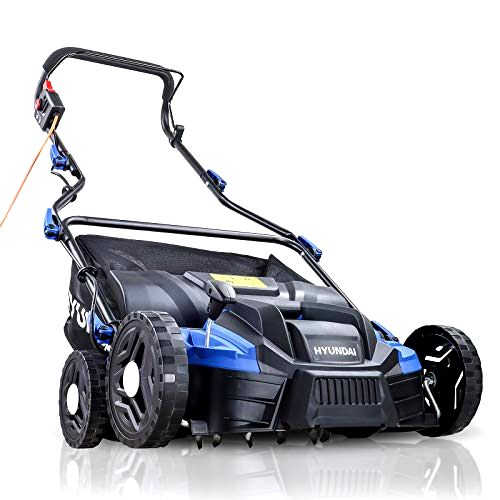
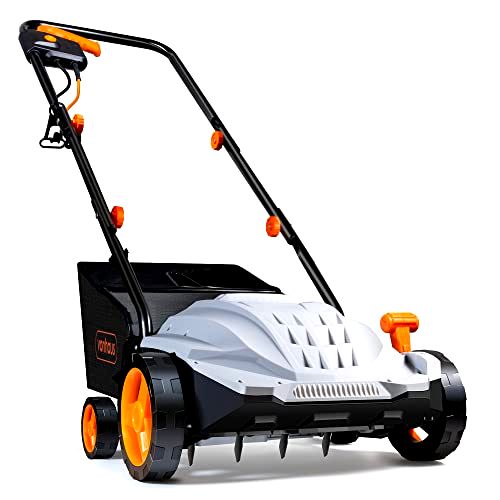
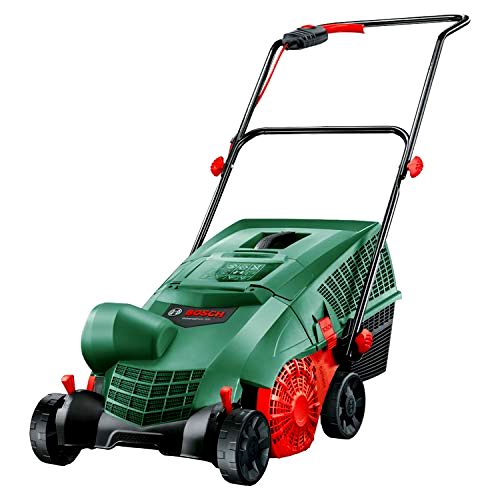
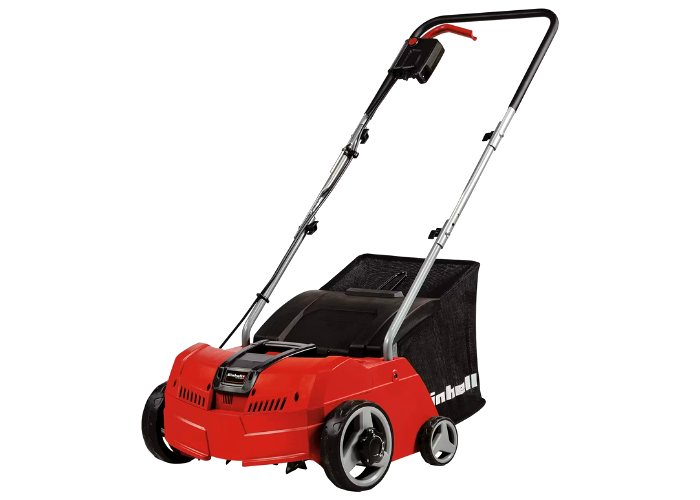
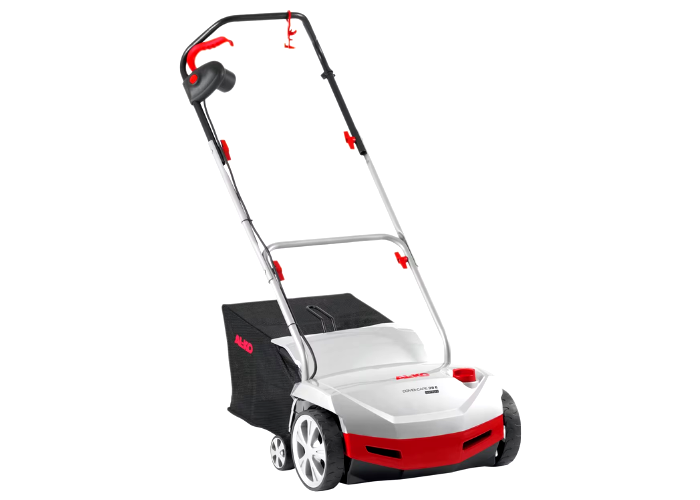
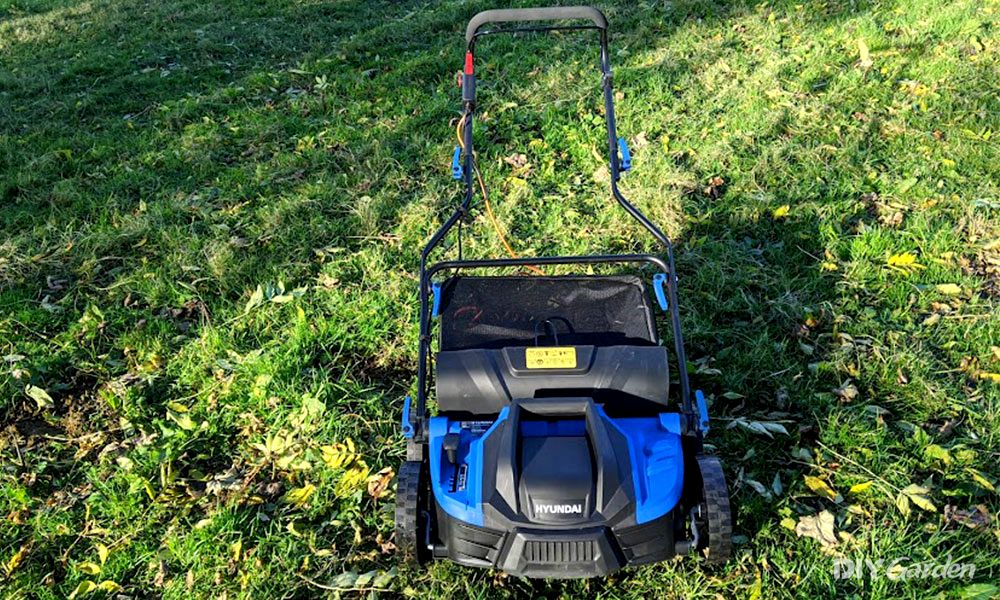
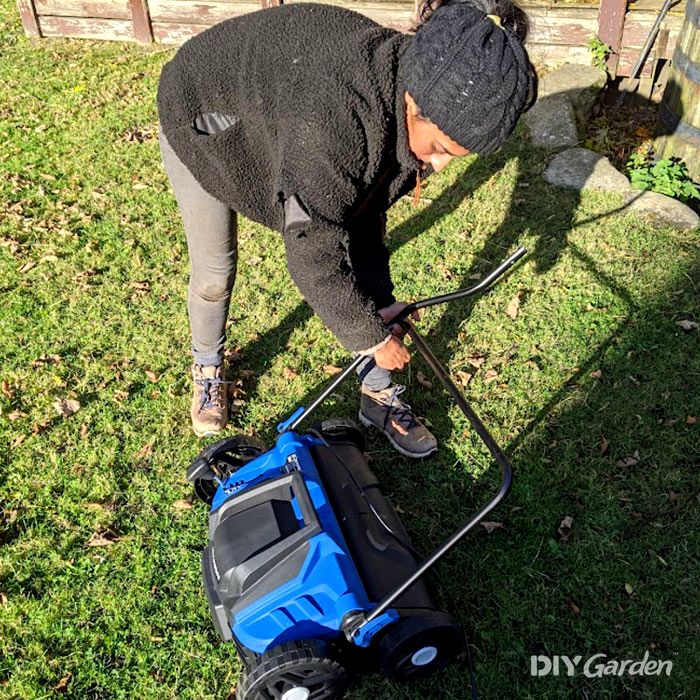
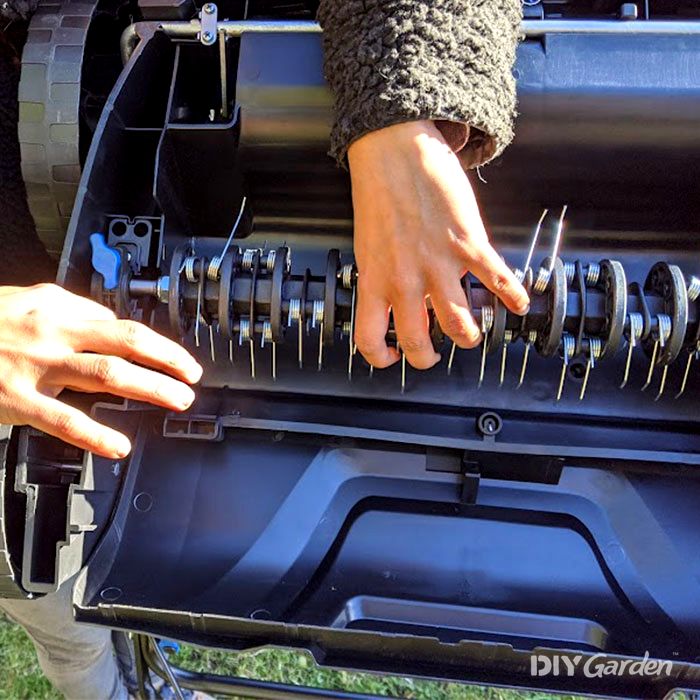
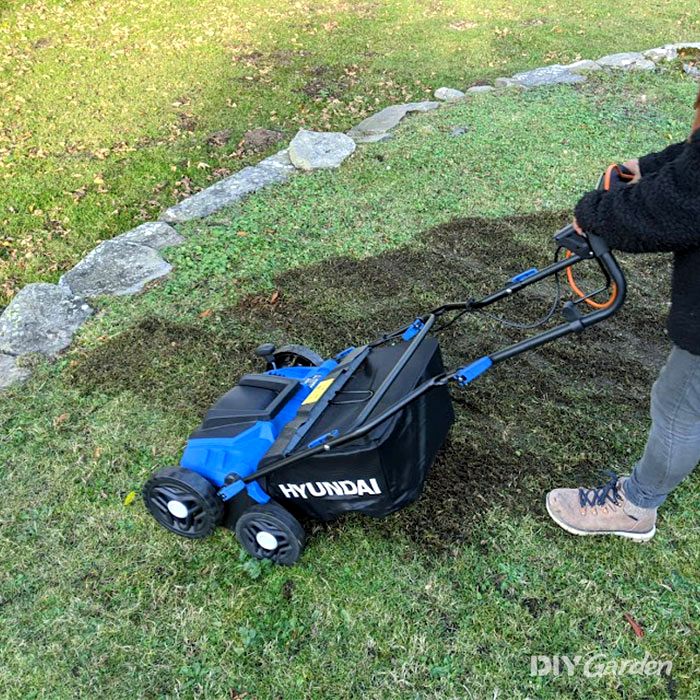
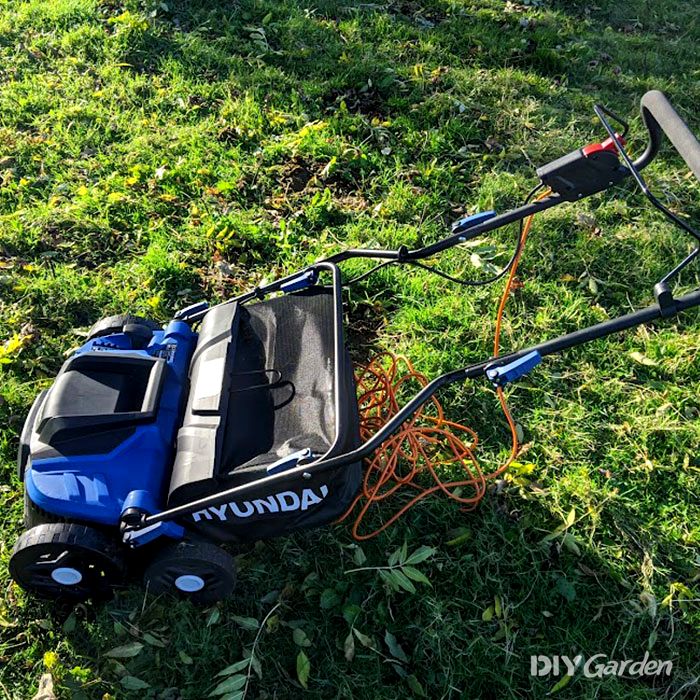
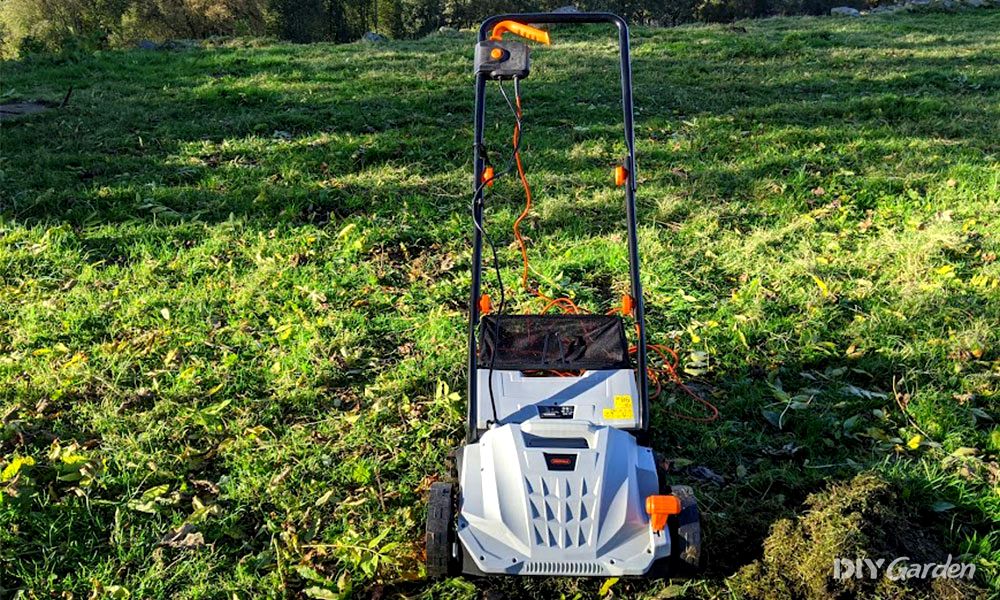
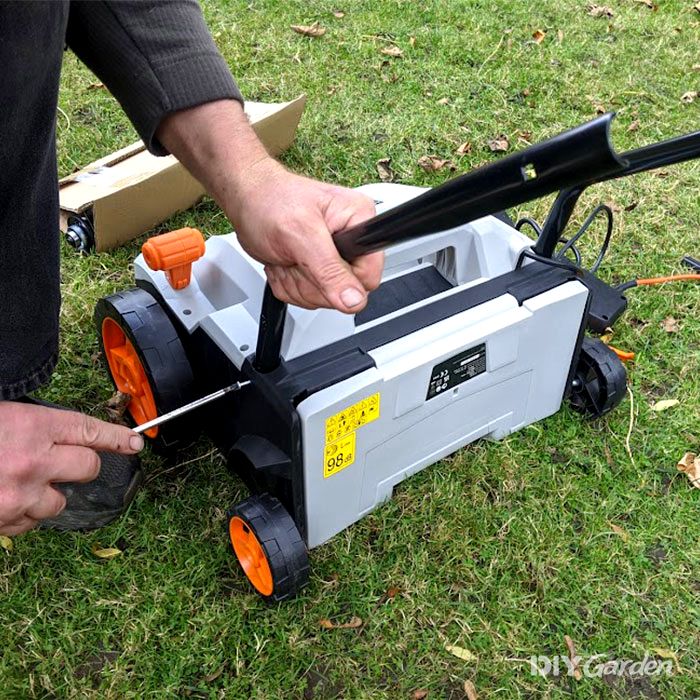
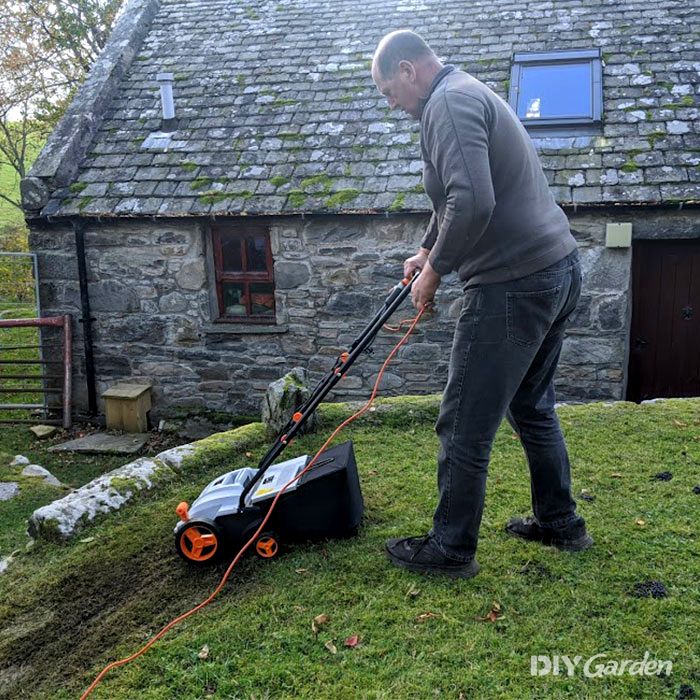
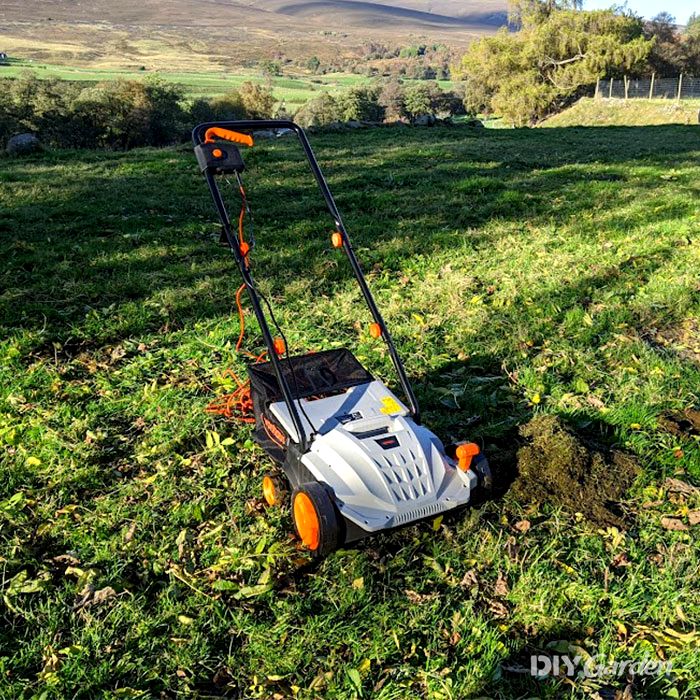
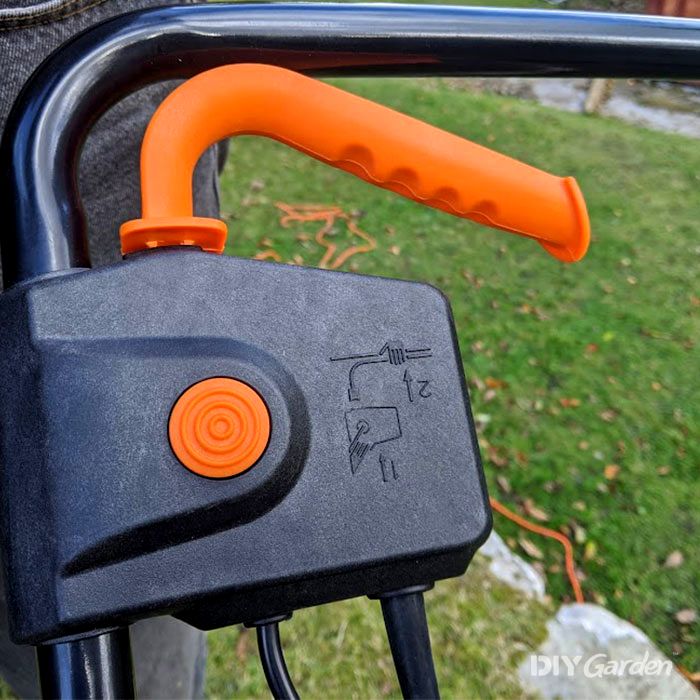
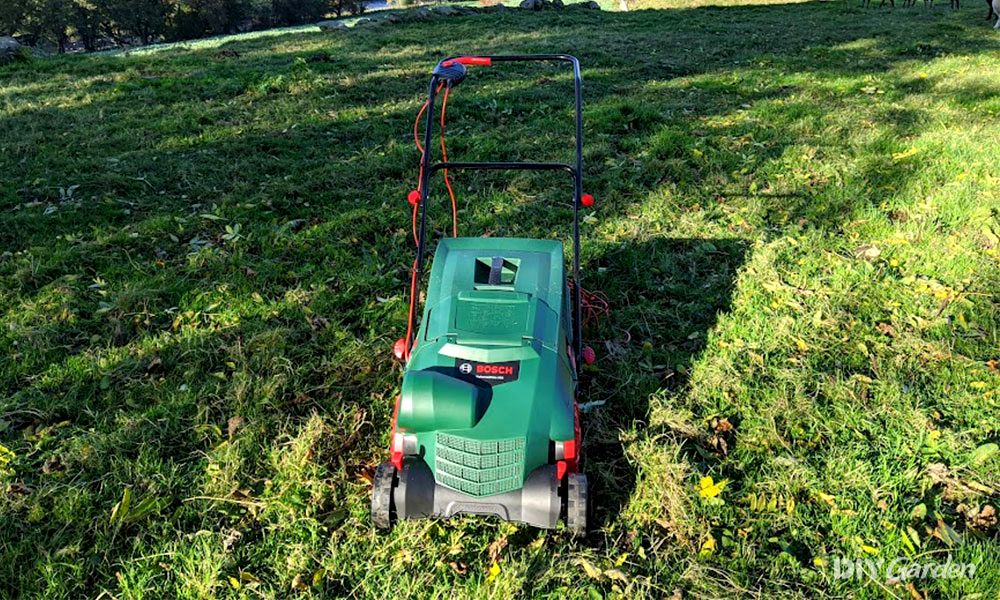
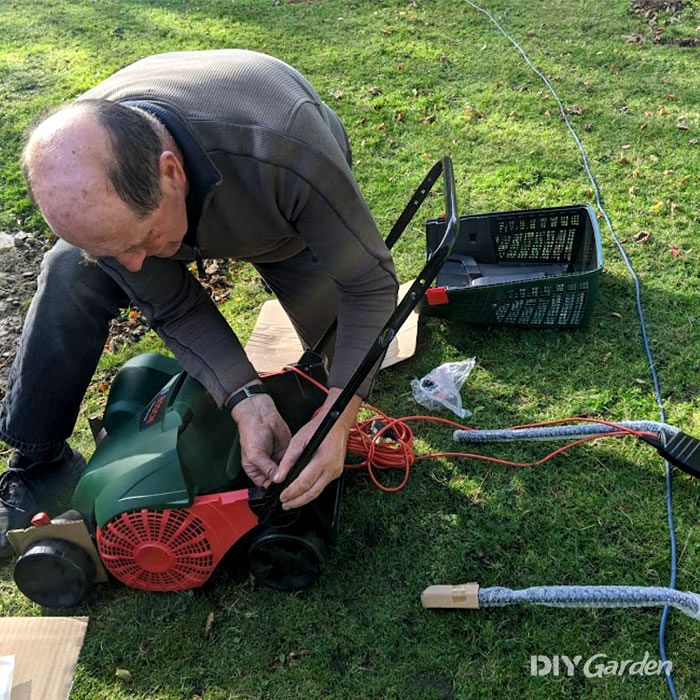
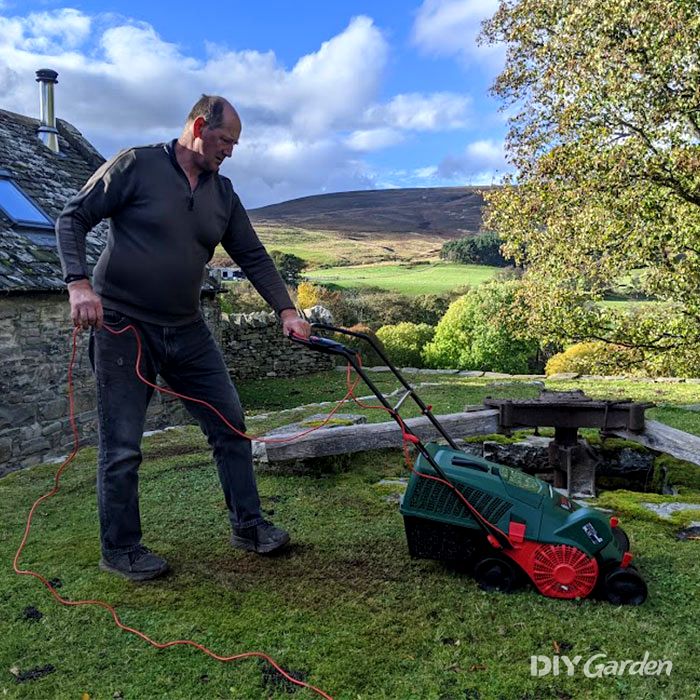
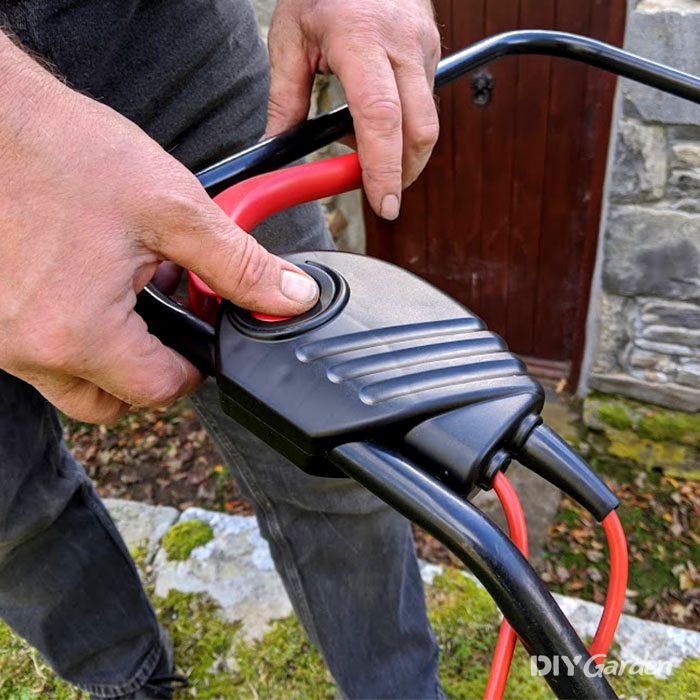
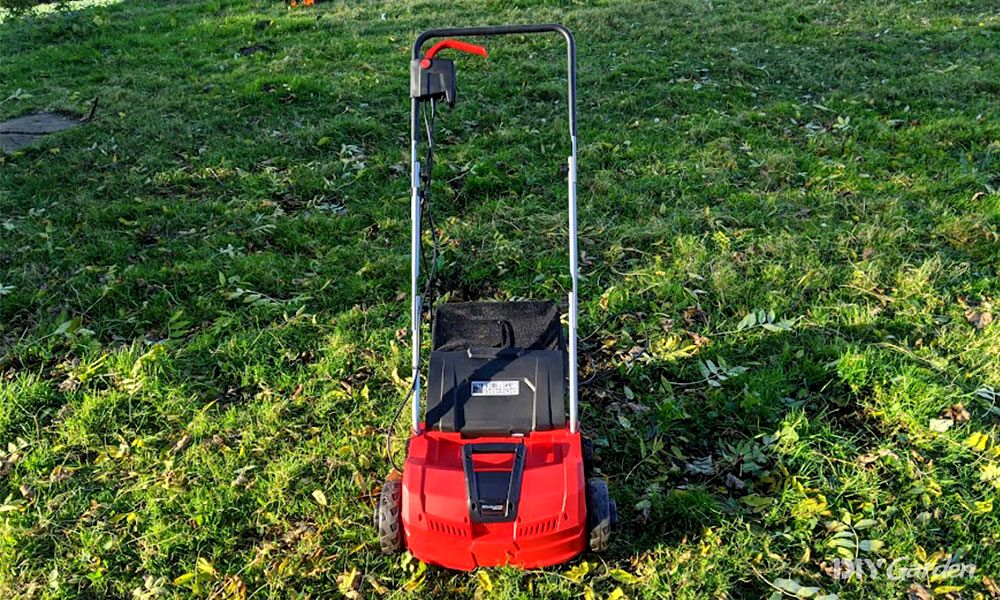
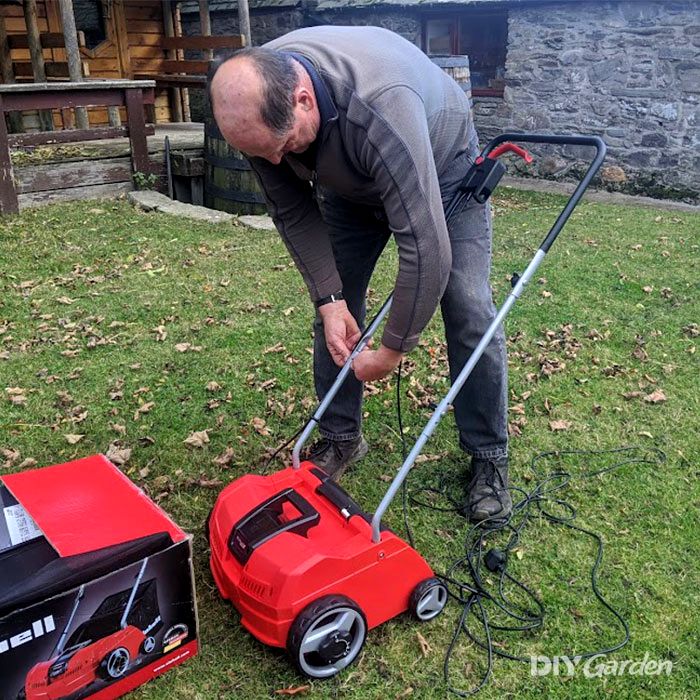
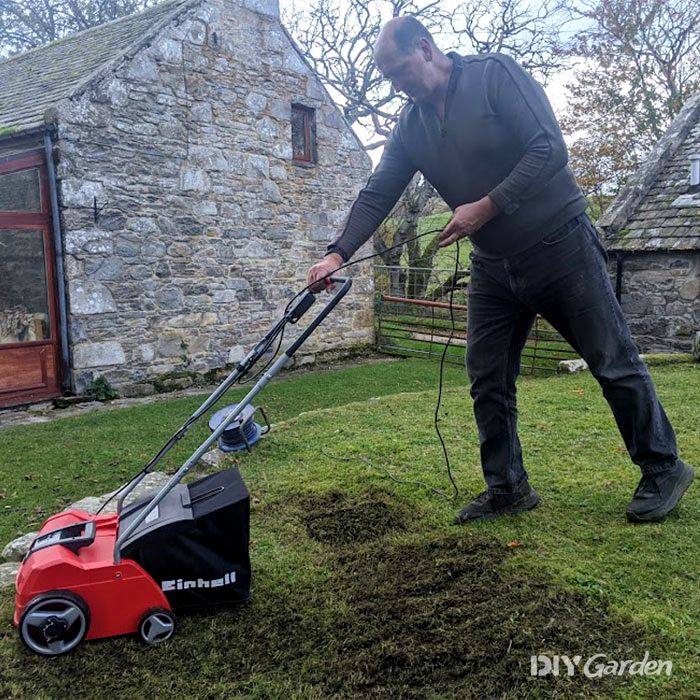
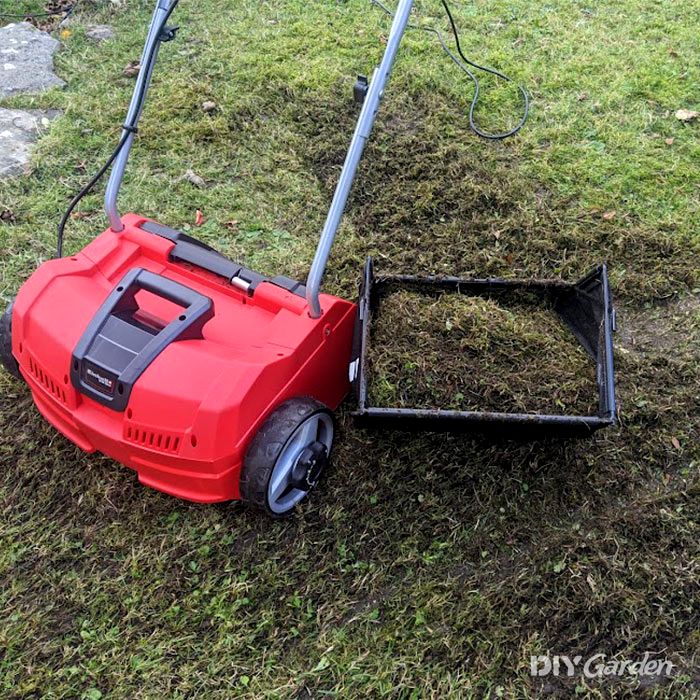
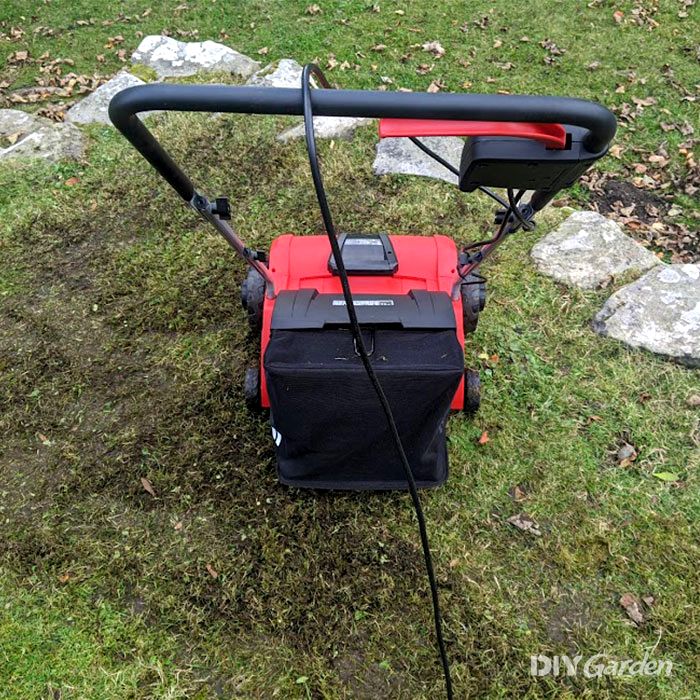
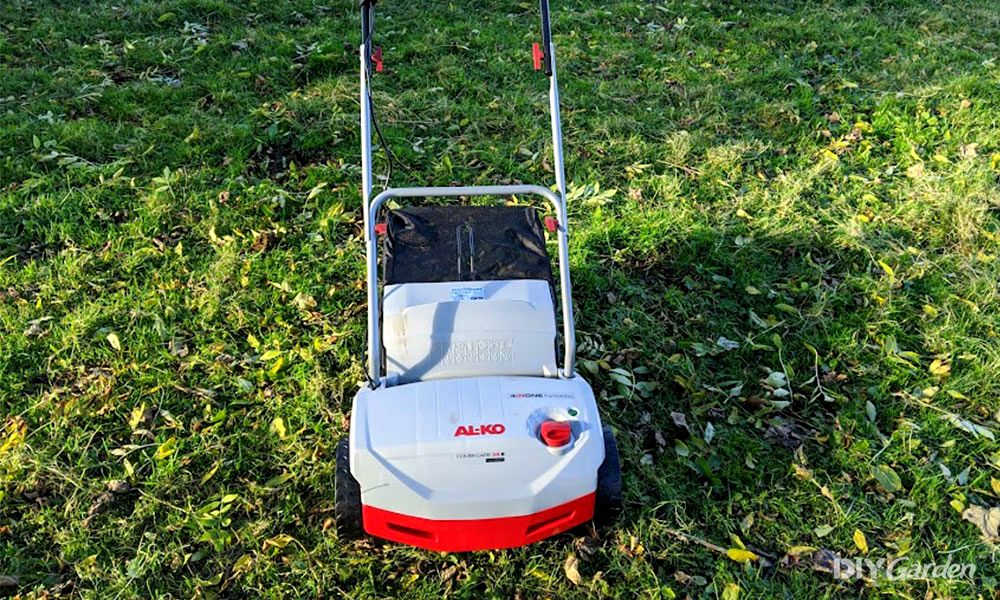
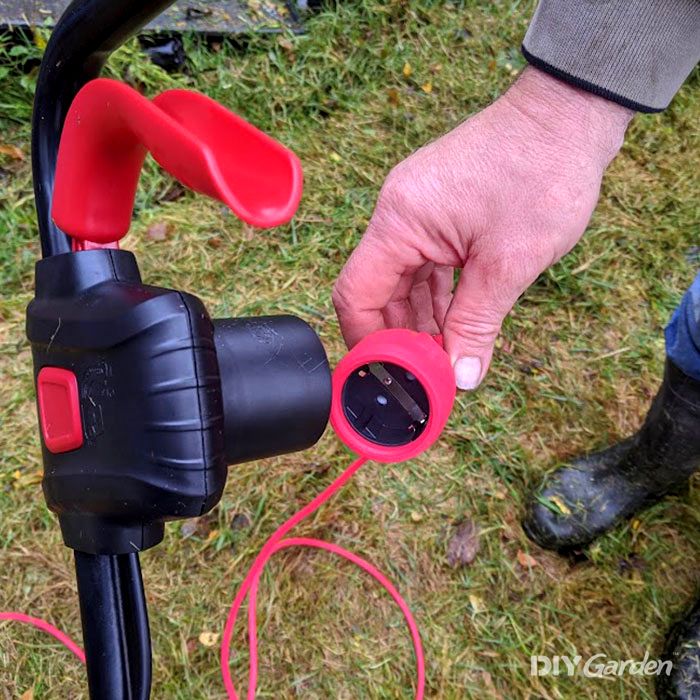
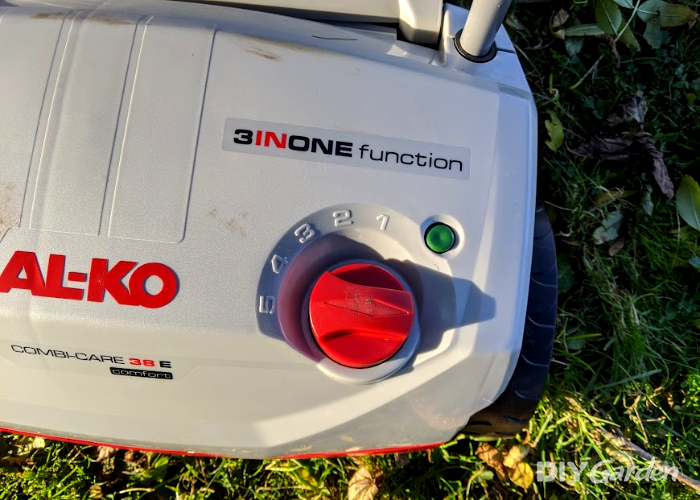
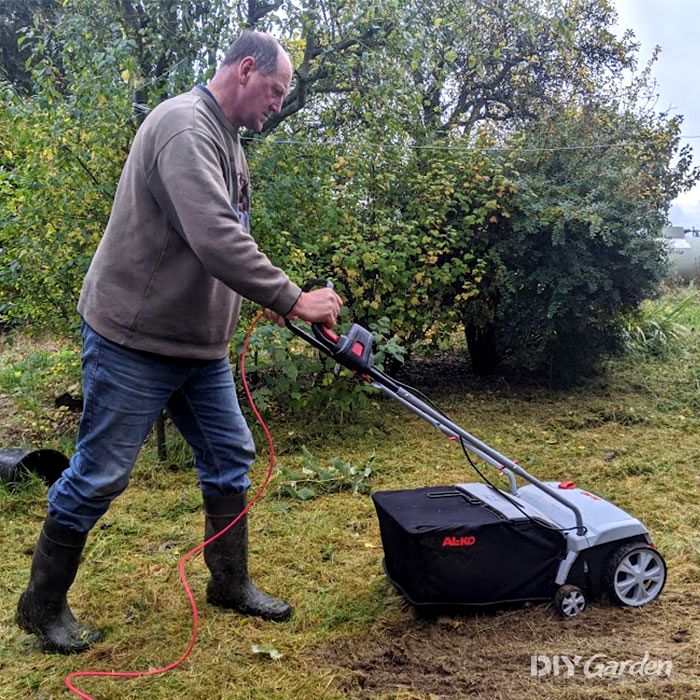
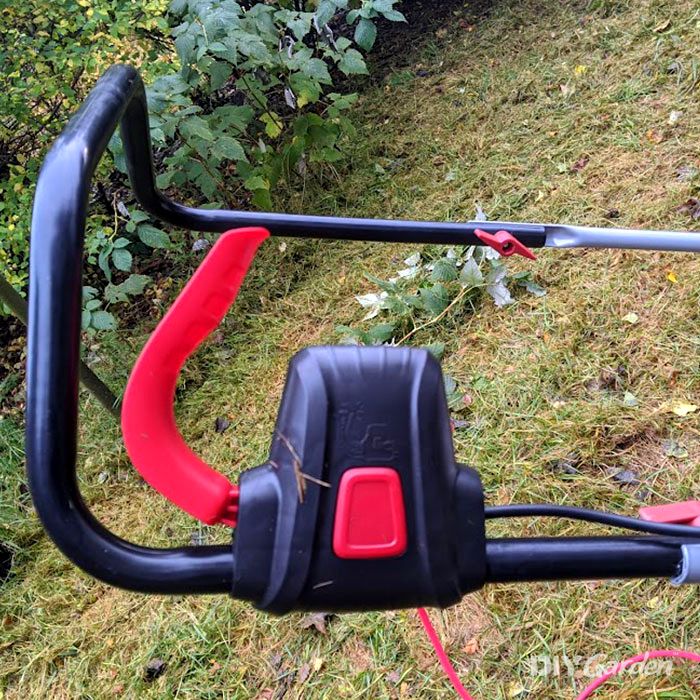
Share